Steam Error Code -137 and -138 ‘Failed to load webpage’
Some Windows users are reporting that they get the Error Code: -137 or Error Code: -138 every time they attempt to load a page through the Steam overlay browser. The error message accompanying the error code is ‘Failed to load web page (unknown error)’.

Here’s a list of potential scenarios that might spawn this error:
- Steam server issue – It’s possible that you’re seeing this error code due to a widespread server issue that is preventing users from accessing community features. In this case, the problem is beyond your control and all you can do is wait for Steam engineers to fix the issue.
- Application glitch – As it turns out, this problem can also occur due to a fairly common glitch that typically appears during prolonged idle periods. To fix it, simply switch Steam mode to Big Picture mode. You can then switch back to normal mode.
- 3rd party Firewall is blocking outgoing Steam connection – If you’re only encountering this problem while attempting to use the overlay browser, it’s very likely that an overprotective 3rd party firewall is causing the problem. If this scenario is applicable, fix the issue by whitelisting Steam or by uninstalling the problematic firewall.
- Corrupted Steam Cache – Temporary cached data can also be responsible for this Steam error. As it’s been confirmed by some users, you can get the issue resolved by accessing the Stream Web Browser settings and deleting the browser cache and settings.
- SteamService.exe doesn’t have permissions – Another potential cause that might spawn this error is a scenario in which your Windows will not recognize Valve as the Publisher for Steam. In this case, you should be able to fix the issue by opening the Properties screen and installing the Digital signature in order to force your OS to assign the correct permissions to SteamService.exe.
- Community page requires Beta version – In case you only see this error while attempting to access certain pages from the Community tab, it’s very likely that this happens due to the fact that you’re not registered as a beta participant. In this case, you should be able to fix the issue by accessing the Accounts menu and enabling Beta Participation.
- Network adapter inconsistency – Under certain circumstances, you might also see this issue due to a generic network inconsistency. To fix it, try refreshing your Network adapter or re-assign Google-provided DNS addresses to IPv4 and IPv6.
How to Fix Steam Error Code -137 and -138 ‘Failed to load webpage’ ?
Before trying any of the potential fixes below, do some research to confirm that the issue is not beyond your control. It’s possible that Steam is currently dealing with a server issue that prevents its users from accessing community features. One way to verify this is by checking the current status at SteamStat.us.
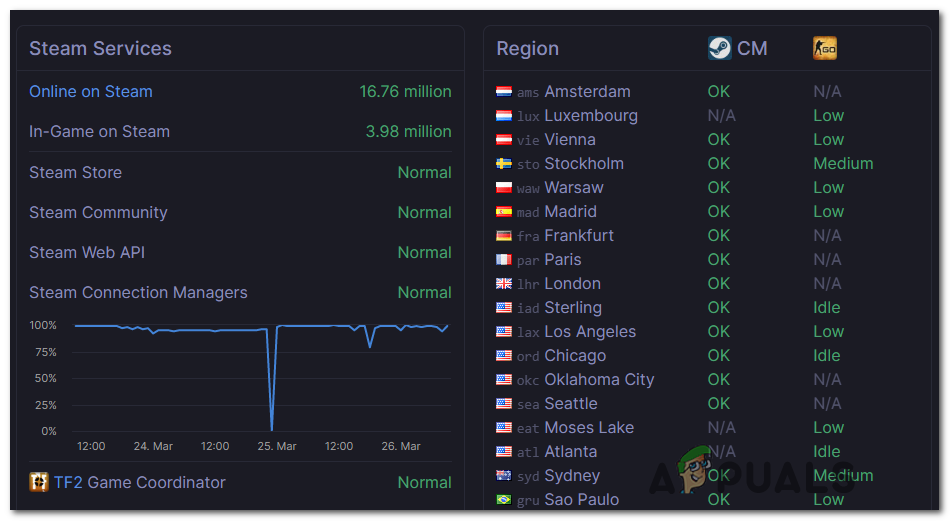
Using Big Picture Mode
If you’re using for a quick workaround that will allow you to play games from your Steam library, consider using Big Picture Mode. This will not fix the root cause of the issue, but a lot of affected users have confirmed that this workaround is effective in circumventing the ‘Failed to load web page (unknown error)’ issue.
To enter Big Picture Mode, simply click on its icon – Top-right corner of the Steam client window.

Once you are inside Big Picture mode, repeat the action that was previously causing the error and see if the issue is now resolved.
If it works, you’ve just managed to circumvent the issue. But keep in mind that this is merely a workaround and it doesn’t resolve the root cause of the issue. If you’re looking to find and fix the problem properly, troubleshoot with the next methods below.
Whitelisting Steam or Uninstalling 3rd party firewall (if applicable)
As it turns out, the majority of users that were encountering -137 and -138 error codes when trying to use the overlay browser from within Steam have confirmed that the issue was being caused by an overprotective firewall that ended up blocking communications going out of Steam due to a false positive.
If this scenario is applicable, you should take a look at your firewall settings and whitelist the Steam application and the ports that are being used by this application. However, keep in mind that the exact steps of doing so will be different from firewall to firewall.
With this in mind, open your 3rd party firewall solution and see if you can whitelist Steam. Additionally, if your Firewall works with a permission system, give full access to Gameoverlayui.exe – Located in the root folder where Steam was installed.
Next, repeat the same thing with SteamWebHelper.exe – Located in Steam/bin.
IMPORTANT: If the problem is being caused by a 3rd party firewall tool, disabling it will NOT fix the issue. The same security rules will still remain in place and the ports will still be blocked from communicating even if the responsible app is turned off.
If whitelisting is not an option in your case, the only way to go is to simply uninstall the 3rd party firewall entirely. Here’s a quick step by step guide with how to do this:
- Press Windows key + R to open up a Run dialog. Next, type ‘appwiz.cpl’ and press Enter to open up the Programs and Features menu.

Type appwiz.cpl and Press Enter to Open Installed Programs List - Once you’re inside the Programs and Features menu, scroll down through the list of installed applications and locate the 3rd party firewall solution that you are actively using. After you manage to locate it, right-click on it and choose Uninstall from the newly appeared context menu.
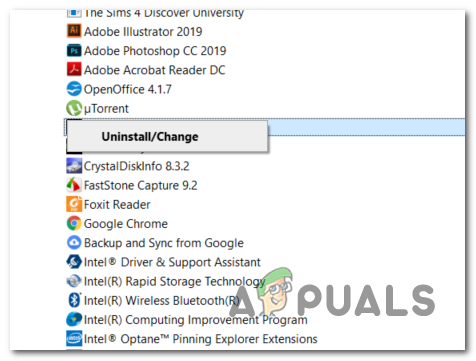
Uninstalling Avast Firewall - Inside the uninstallation screen, follow the on-screen prompts to complete the uninstallation. Next, reboot your computer at the end of this procedure.
Note: If you want to ensure that you’re not leaving behind any leftover files that might still cause the same behavior, follow this article (here) to remove any remnant files that might still enforce security restrictions on Steam.
In case this method wasn’t applicable, move down to the next potential fix below.
Clearing the Steam’s Web Browser Cache
Another potential culprit that might be contributing to the apparition of the -137 or -138 error codes in Steam is bad temporary cached data. As confirmed by some users, you might be able to fix the issue by accessing your Steam Web Browser settings and deleting the Browser Cache and Cookies.
This is especially effective in those situations where the problem is only occurring when you attempt to use the overlay browser that Steam offers.
If this scenario is applicable, follow the instructions below to clear the web browser cache in Steam:
- Open Steam and sign-in with the same account that you’re encountering issues with.
- From the main dashboard, click on Steam (from the ribbon bar at the top), then click on Settings from the newly appeared context menu.
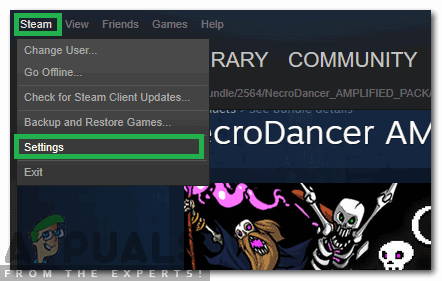
Accessing the Steam Settings Menu - Once you’re inside the Settings menu, select Web Browser from the vertical menu on the left.
- Next, move to the right section, click on Delete Browser Cache and then confirm by clicking Ok to initiate the procedure.
- After the web browser cache has been cleared, click on Delete All Browser Cookies and repeat the procedure again.
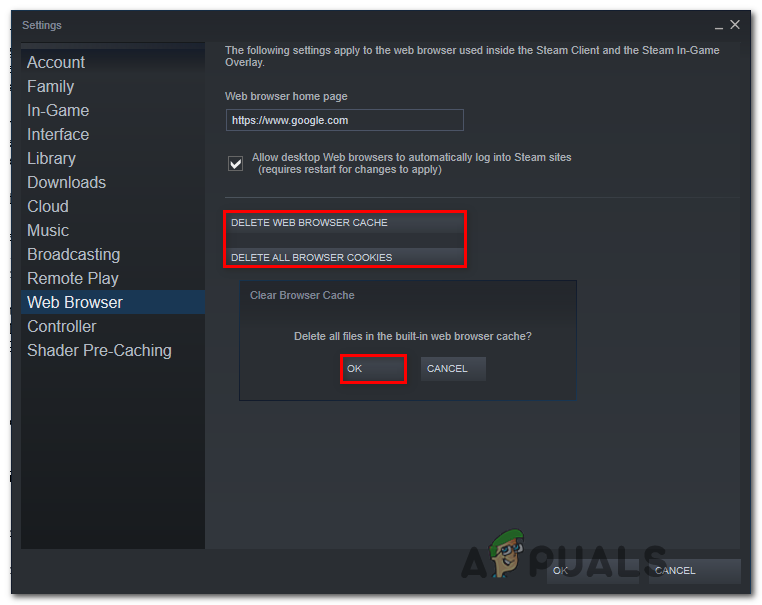
Clearing Steam’s web browser cache and cookies - Once the operation is complete, restart your steam client and see if the issue is resolved at the next system startup.
In case this operation didn’t fix the issue and you’re still encountering the same Error Code: -137, move down to the next potential fix below.
Giving Permissions to SteamService.exe
As it turns out, this issue can also occur due to an inconsistency caused by the fact that Windows is unable to recognize the signature of the Steam client – it will treat the application as one from an Unknown publisher even though Steam is signed by Valve.
If this scenario is applicable, you can end up giving every permission needed to SteamService.exe by opening the Properties screen and showing and installing the certificate from the Digital Signature tab. By forcing Windows to retrieve certificate data manually, you should end up eliminating the Error Code: -137 or Error Code: -138 completely.
Here’s a quick guide on giving the correct permissions to StreamService.exe by forcing Windows to acknowledge the digital signature of the main executable involved in this operation:
- Open File Explorer and navigate to the location of your Steam directory. Once you get to the root directory, access the bin folder in order to reach steamservice.exe.
- Once you are inside the correct location, right-click on steamservice.exe and choose Properties from the newly appeared context menu.
- Inside the Properties screen, select the Digital Signatures tab, select Value from the Signature list section, then click on the Details box.
- At the Digital Signature Details screen, select the General tab and click on View Certificate.
- Next, click on Install Certificate from the Certificate menu (General Tab).
- At the first Certificate Windows Wizard menu, select Local Machine under Store Location and click Next to continue.
- Next, select the toggle associated with Automatically select the certificate store based on the type of certificate and click Next to continue.
- At the final prompt, click Finish to complete the installation of the Valve certificate
- After the operation is complete, restart steam and see if the issue is resolved.
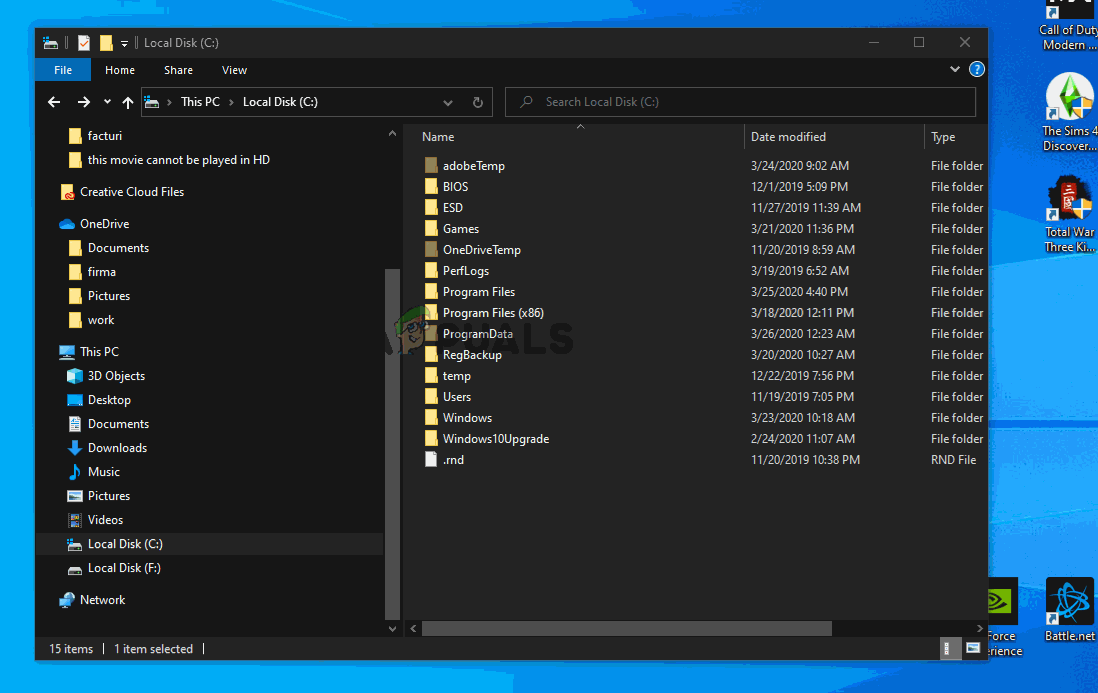
In case you’re still encountering the Error Code: -137 or Error Code: -138 despite ensuring that the Valve digital certificate is installed, move down to the next potential fix below.
Enabling Beta Participation
In case you only get the Error Code: -138 when trying to access the Store and the Community tab in Steam, but you can access your Steam’s Library, you might be able to fix the issue swiftly by enlisting in Beta Participation.
There is no official explanation on why this is effective, but a lot of affected users have confirmed that this quick fix finally allowed them to get rid of the annoying error message.
If this scenario is applicable to your current situation, here’s a quick step by step guide that will show you how to enable Beta Participation in your Steam Client:
- Open Steam and use the ribbon bar at the top to click on Stream and then on Settings (from the context menu).
- Inside the Settings menu, select the Accounts tab from the menu on the right, then move to the right section and click the Change button associated with Beta Participation.
- From the Beta Participation screen, use the drop-down menu to select Steam Beta Update, then click Ok to save the changes.
- Wait until the installation is complete, then restart your Steam client once the operation is complete.
- Attempt to access the Store or the Community tabs in Steam to see if the problem has been fixed.

If the same issue is still occurring, move down to the next potential fix below.
Changing the Default DNS Settings
In case you’re using an ISP (Internet Service Provider) that assigns automatic DNS (domain name servers) and dynamic IPs, it’s possible that you are seeing the Error Code: -138 / -137 due to a network inconsistency.
If this scenario is applicable, you should be able to get the issue resolved by moving away from the default DNS switchboard to Google’s Public DNS. A lot of affected users have confirmed that this operation was the only thing that allowed them to fix the issue.
However, keep in mind that in order to do this, you will need to do some modifications from your Network Connections window (in your Windows GUI settings). Here are some step by step instructions that will show you how to do this:
- Open up a Run dialog box by pressing Windows key + R. Next, type ‘ncpa.cpl’ and press Enter to open up the Network Connections window.
- Once you’re inside the Network Connections menu, select the connection that you want to configure with Google Public DNS.
Note: If you’re using a wireless network, right-click on Wi-Fi (Wireless Network Connection) and choose Properties from the context menu. If you’re using a wired connection, right-click on Ethernet (Local Area Connection) - When you get to the Wi-Fi/Ethernet Properties screen, select the Networking tab and click on the Settings button under This connection uses the following items.
- Next, select Internet Protocol Version 4 (TCP/IPv4) and click on the Properties menu.
- Inside the Internet Protocol Version 4 (TCP/IPv4) settings, select the General tab and check the toggle associated with Use the following DNS server address and replace the Preferred DNS server and Alternate DNS server with the following values:
8.8.8.8 8.8.4.4
- Save the changes, then repeat steps 3 and 4 all over again with Internet Protocol Version 6 (TCP / IPv6). But when you do this, use the values below for Preferred DNS server and Alternate DNS server respectively:
2001:4860:4860::8888 2001:4860:4860::8844
- Once the change has been enforced, restart your network connection and open Steam again to see if the problem has been resolved.
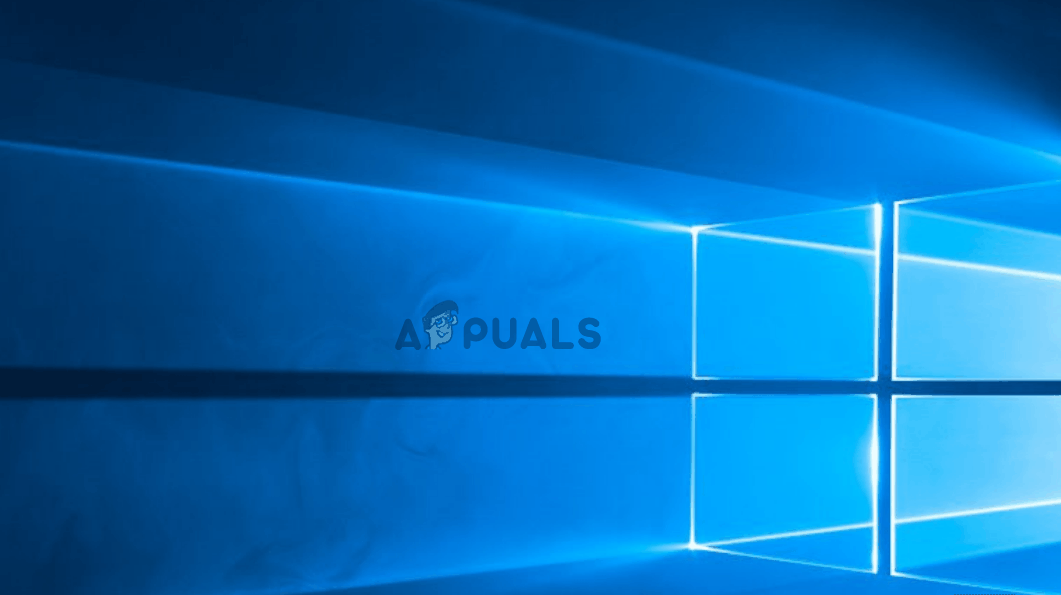
Setting Google’s DNS In case you’re still encountering the same error message, move down to the final potential fix below.
Refreshing the Network Adapter
If you get this far and none of the potential fixes above have helped, it’s very likely that you’re dealing with some type of network inconsistency. One final thing that you can try is to reset the network adapter to the default configuration – This procedure is also known as winsock reset or coms reinstall.
In the event that an inconsistent network adapter is causing the Failed to Load Web Page in Steam, follow the instructions below to refresh your network adapter:
Note: The instructions below should work regardless of the Windows version that you’re currently using.
- Open up a Run dialog box by pressing Windows key + R. Next, type ‘cmd’ and press Ctrl + Shift + Enter to open up an elevated Command Prompt terminal. When you see the User Account Control prompt, click Yes to grant Admin Access.

Running the Command Prompt - Once you’re inside the elevated CMD prompt, type the following command and press Enter to refresh the network adapter:
netsh winsock reset
- After the command is successfully processed, restart your computer and see if the problem is fixed at the next computer startup.





